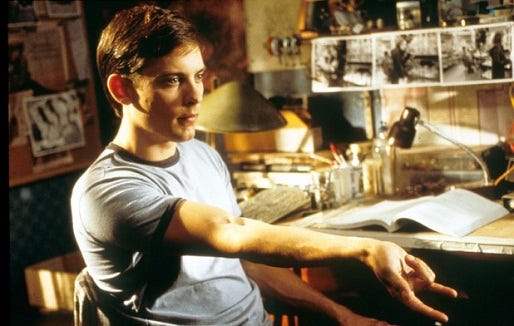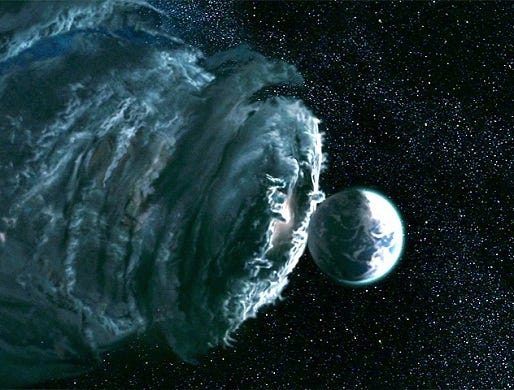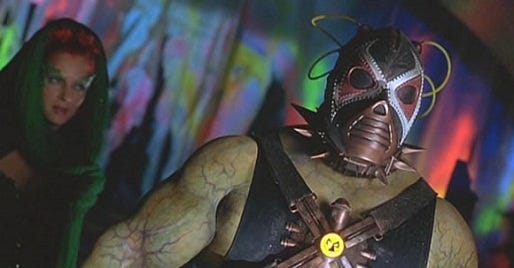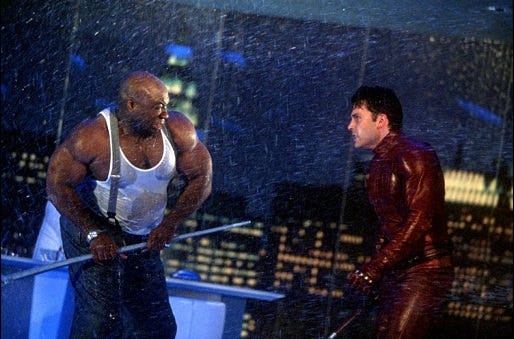The 8 Worst Comic-Book Movie Canon Changes, Part 1
Since the days of the first flickering images, we have known that film adaptations of existing stories have to have some differences from their source material. With each film version of a book, TV show, play, or even other movie, we know things will change in some form or fashion.
Comic-book movies are no exception, though comic collectors may come off as more vocal or even whinier than most. While "Guardians of the Galaxy" no doubt deviates from its source material, the spirit of the source is still there. Fellow Film Yapper Evan Dossey and I, each self-avowed comic-book nerds (perhaps he more than me, though) recently discussed our least-favorite, most radical, and perhaps most nonsensical changes from comic-book source to celluloid. Here's how our discussion went down.

Joe: Anyone who knows me or has read my work for any length of time has to know I'm a big Spider-Man fan, so it shouldn't surprise anyone to know my list will be heavy on the ol' Web-head. My first choice is maybe the biggest from fans way back in 2002 when Sam Raimi's first "Spider-Man" hit theaters: Spider-Man's organic web-shooters. In the comics, of course, Peter Parker invented his web-shooters. They were mechanical devices that used webbing that he developed.
In the Raimi films, Pete gained the genetically enhanced ability to spin his own webs, which afforded Raimi the opportunity to subtly equate Spider-powers with puberty, with web-shooting drawing a rather disgusting parallel with masturbation (or, perhaps, "nocturnal emissions"). Overlooking that rather disturbing analogy, though, it didn't bother me so much at the time, but in retrospect it seems a little silly and unnecessary given that the remake handled it more or less OK (though you can argue the merits of Oscorp not noticing a large, ongoing supply of its experimental wiring going missing). The mechanical shooters add a dimension to Spider-Man, and that mechanical shooters can fail, be damaged or simply run out of webbing adds a sense of vulnerability to the character.
Evan: Y'know, I like it both ways. I think at the time it was necessary, given where comic book movies were at the time (although "Blade" and "X-Men" are credited, rightfully so, with kickstarting the genre, I think Raimi's "Spider-Man" is truly where that era of movies began).

So for my first film, I might as well choose the one that disappointed me the most: Galactus in "Fantastic Four: Rise of the Silver Surfer." While they managed to depict Silver Surfer perfectly, the creators shied away from a full-on "giant man in the sky" rendition of Galactus, opting instead for a character-less Space Cloud. The thing is, we've seen space cloud-type enemies before. It's as faceless and characterless as the asteroids in "Armageddeon." Galactus is a character with a tragic but cosmic agency; he eats planets to live. We are simply a nuisance, flies on his food. They didn't do a particularly good job conveying that in "RoSS," and I'm still hoping someday we'll see Galactus proper.
So it's no surprise that, as fans, we have a lot to pick from in the first era, when the genre was still in its relative infancy and the simple existence of the movies was brave enough on the studio's parts.
Joe: You're right about that! They tried to have their cake and eat it too by having his shadow in one scene, and the fire-engulfed head toward the end, but in my eyes they were just acknowledging their failures.

Let's travel back a few years for the next entry to arguably the most egregious change in a movie that has its superheroes ice skating, its dark, icy villain spouting one-liners, and its villains teaming up despite the fact that their success would necessarily negate the other. Yes, I'm talking about "Batman and Robin's" Bane, likely the best of Batman's more contemporary villains, reduced to a grunting, mindless sidekick for Poison Ivy of all people. The Bane from the comics (and the corrected version from "The Dark Knight Rises," which got him about 90% correct) is smart, strong and calculating. He's superior to Batman in virtually every way, and, of course, in the comics and "TDKR," he famously broke Batman's back and forced him into retirement for a time.
In "B&R," he was a throwaway character. He was essentially a cross between Bob the Goon and the guy Batman fought in the church tower in the first "Batman." It would be tantamount to making the Joker a secondary character. Of course, we were all jazzed up when we saw that they were pulling out a new character at a time when conventional wisdom was to only use the classics. But he was a wasted character and a missed opportunity that it would take more than a decade to correct.

Evan: "Having their cake and eating it too" is probably the best description of many of the early movies' problems. Lip-service to fidelity while doing something wholly their own. Bane is similar. He has his mask, but none of his character. I feel the same way about, for instance, the entire "Daredevil" movie. So much of it is so clearly created with love and affection for the Frank Miller-era take on the character, to the extent they even ripped scenes straight from the book! But the character just isn't there. Daredevil's origin is changed in a way that removes his agency and heroism. His father is turned into a thug. And most of all, Daredevil straight up murders Kingpin's goons in the film. It's a strange, off-kilter take on the character that can't even be loved for its goofy excesses. It's best left forgotten, especially with what looks to be a fantastic Marvel Studios version on the horizon.


